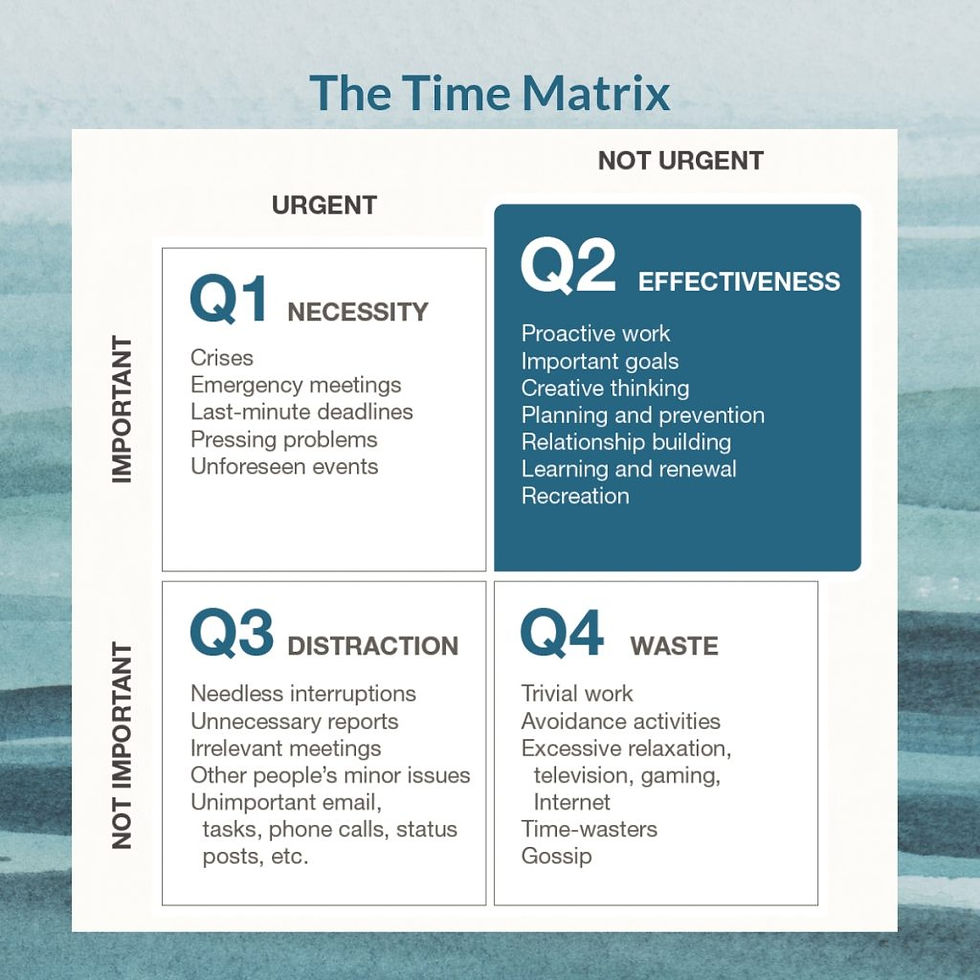Why Taking Time for Improvement Matters More Than Taking Time for Production
- J J
- 14 apr
- 3 minuten om te lezen
Bijgewerkt op: 29 jun
In the world of business, we often pride ourselves on our productivity. We answer emails late at night, jump from meeting to meeting, extinguish daily fires, and wear our busyness like a badge of honor. But beneath all that movement lies a critical question:
Are we actually improving, or just surviving?
From the perspective of Lean methodology, which is deeply rooted in efficiency and impact, this is a key concern. Lean isn’t about working harder. It’s about working smarter. Yet in many organizations, we fall into a trap: we prioritize output over progress. We sprint through our days, thinking we’re being effective, when in reality we’re just caught in the momentum of doing.
The Leadership Trap
This is especially true for leaders. The hard-working manager, always “on,” holding the team together, becomes a silent liability. Because when that manager burns out or steps away, everything collapses.
That’s not sustainable leadership. True leadership is not about how fast or how hard you work, it’s about building a culture and a system that can thrive without your constant intervention.
Or, as I like to say:
Taking time for improvement is more important than taking time for production.
The Power of Quadrant 2 Activities
Stephen Covey introduced a time management model, you may know it from The 7 Habits of Highly Effective People, that classifies tasks into four quadrants based on urgency and impact:

Most of us spend our days in Quadrant 1: reacting to problems, responding to pressure. But the activities that truly shape the future? They live in Quadrant 2.
These are the actions that don’t scream for your attention but hold the highest value. They’re the ones we know we should do, but often postpone. Why? Because they’re not urgent. But they are essential.
For me, as someone who leads other leaders, a Quadrant 2 activity might be joining a team’s daily start, not to micromanage, but to observe the interactions, sense the dynamics, and see leadership in action. These moments give me insight I could never get from a report or a meeting summary.
It could also mean sitting in on a one-on-one, showing up at the office unannounced to listen, reflect, and connect. These are not urgent. But their impact is profound.
The Day-to-Day Dilemma
In a call center environment, for instance, we often obsess over hitting that 9:00 sharp start time. A daily huddle has to be 15 minutes. Not 16. Because if it’s 16, someone might miss a call.
But let’s challenge that logic. What if a 30-minute morning huddle allows 20 people to align, understand a new process, and have their questions answered up front? What if that prevents a flood of confusion, one-on-one troubleshooting, and unnecessary rework?
Sometimes, taking 15 extra minutes now saves you hours later.
Yet we skip it. Why? Because we’re focused on production. Not improvement.
The Invitation: Pause and Reflect
When you continually prioritize production over reflection, firefighting becomes your default. But if you invest time, intentionally, in Quadrant 2 activities, the “fires” begin to die down. Systems improve. People grow. Things flow.
So I leave you with this:
🧭 What are your Quadrant 2 activities?
What are the non-urgent, high-impact things you keep postponing but know deep down would change everything if you just made time for them?
And next time you feel the urge to rush into doing, remember:
Taking time for improvement is more important than taking time for production.









Opmerkingen